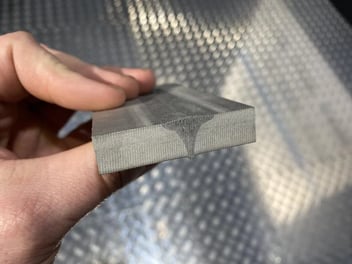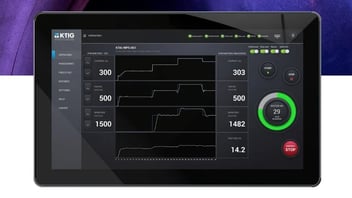Welding Automation: The Global Welder Shortage Answer?
Welding automation can be a valuable tool for addressing the global welder shortage and improving the efficiency and safety of welding operations in various industries. It is not necessarily true that welding companies that do not switch to using welding automation will go out of business. However, companies that do not adapt to changing market trends and technological advancements may find it challenging to remain competitive in the long run.
Welding automation can offer many benefits to companies, including increased productivity, improved quality, and reduced labor costs. Companies that do not adopt welding automation may find it difficult to compete with those that do, particularly in industries where automation is becoming more common.
Welding automation refers to the use of robotic or automated equipment to perform welding tasks, rather than relying solely on manual labor. This can include robotic arms, welding manipulators, and other machines that are designed to perform welding tasks with high precision and consistency.
There are several reasons why welding automation is becoming increasingly important. One major factor is the global shortage of skilled welders. As the demand for welding services continues to grow, there simply aren't enough trained welders to fill all of the available positions. This can lead to longer lead times for welding projects, increased costs for employers, and reduced quality of work if less-skilled welders are used to filling the gap.
By implementing welding automation, companies can increase their productivity and efficiency, reduce labor costs, and improve the quality and consistency of their welds. Automation can also help to reduce the physical strain on workers, as well as the risk of injuries or accidents.
Welding automation can help to ensure high-quality welding results in several ways:
-
Consistency: Automated welding equipment can perform the same welding operation with the same parameters and precision every time, regardless of the operator. This helps to eliminate variations in the welding process, which can lead to inconsistent results.
-
Accuracy: Robotic welding systems can be programmed to perform welds with extremely high accuracy, ensuring that the welds are precise and uniform in size and shape.
-
Reduced Errors: Automated welding systems can help to reduce human errors that can occur during manual weldings, such as incorrect positioning, incorrect settings, or fatigue.
-
Increased Efficiency: Welding automation can help to increase the speed and efficiency of welding operations, allowing more welds to be completed in less time. This can help to reduce production costs and increase throughput.
-
Improved Safety: Welding automation can help to improve safety by reducing the need for manual labor in hazardous welding environments, and by eliminating the need for operators to be in close proximity to the welding process.
When using automated welding technologies, there are several critical factors that should be considered to ensure optimal results. These factors include:
-
System Design: The design of the welding system, including the selection of the robotic arm or automated equipment, must be carefully considered to ensure that it is appropriate for the specific welding task. Factors to consider include the size and shape of the workpiece, the type of welding process, and the desired welding speed and accuracy.
-
Programming: The programming of the welding system is critical to ensure that the welding process is carried out with the correct parameters, including the welding speed, voltage, current, and wire feed rate. The programming should also take into account any variations in the workpiece or the welding environment, such as changes in temperature or humidity.
-
Quality Control: Quality control measures should be implemented to ensure that the welding results meet the required standards. This may include real-time monitoring of the welding process, periodic inspections of the welds, and testing of the finished products.
-
Operator Training: Operators of the automated welding system should be trained to operate the equipment safely and efficiently. They should also be trained to program the welding system and to troubleshoot any issues that may arise during the welding process.
-
Maintenance: Regular maintenance of the welding system is critical to ensure that it is operating at peak efficiency. This may include cleaning the equipment, replacing worn parts, and performing routine inspections and calibration checks.
Careful consideration of these factors can help to ensure that automated welding technologies are used effectively and produce high-quality welding results.
K-TIG is a high-speed welding process that uses a Keyhole Gas Tungsten Arc Welding (GTAW) technology to produce high-quality welds. K-TIG can be used with welding automation to further enhance the efficiency and consistency of the welding process.
Using K-TIG with welding automation can offer several benefits, including:
-
Increased Speed: K-TIG is a high-speed welding process that can produce welds up to 30 times faster than traditional TIG welding processes. When combined with welding automation, K-TIG can further increase the speed and efficiency of the welding process, allowing for more welds to be completed in less time.
-
Consistent Weld Quality: K-TIG produces consistent and high-quality welds, thanks to its precise control of welding parameters and the use of keyhole technology. When combined with welding automation, this can ensure that every weld is performed with the same level of precision and consistency.
-
Reduced Operator Fatigue: Welding automation can reduce the need for manual labor, reducing the strain and fatigue on operators. This can improve safety and productivity, while also reducing the risk of errors or inconsistencies in the welding process.
-
Improved Welding Environment: K-TIG produces less heat and fumes than traditional welding processes, creating a safer and more comfortable working environment for operators.
-
Reduced Material Waste: K-TIG can produce welds with minimal distortion and material waste, thanks to its precise control of the welding parameters. This can help to reduce material costs and improve the overall efficiency of the welding process.
Overall, using K-TIG with welding automation can offer several advantages for those looking to improve the speed, quality, and efficiency of their welding operations.
How can I determine if my welding automation is of good quality?
Determining the quality of welding automation can be a complex process that involves evaluating several factors. Here are some key indicators to look for when evaluating the quality of welding automation:
-
Precision and Consistency: The welding automation should produce welds with consistent quality and precision, regardless of the operator. Look for welding automation that can control parameters such as voltage, current, and wire feed rate with high accuracy, to ensure consistent results.
-
Versatility: High-quality welding automation should be able to handle a range of welding processes and materials, including different thicknesses, types of metals, and welding techniques. This allows for greater flexibility in your welding operations and can help you adapt to changing welding needs.
-
Efficiency: The welding automation should be able to complete welding tasks efficiently, without sacrificing quality. Look for automation that can perform welding tasks at high speeds, without compromising accuracy or consistency.
-
Ease of Use: The welding automation should be user-friendly, with intuitive programming and easy-to-understand interfaces. This can help to reduce operator error and make it easier to train new operators on the equipment.
-
Reliability: High-quality welding automation should be reliable, with minimal downtime or maintenance required. Look for equipment with a good reputation for reliability and durability, and ensure that the equipment is properly maintained to prevent breakdowns and keep it running smoothly.
When evaluating the quality of welding automation, it is important to consider the specific needs and requirements of your welding operations, as well as the equipment's features and capabilities. Conducting research, reading reviews, and speaking with experts in the field can help you make an informed decision about which welding automation is right for you.
What makes welding automation have consistent and steady travel speed?
Welding automation can achieve consistent and steady travel speed by using advanced control systems that regulate the speed and motion of the welding equipment. Here are some key factors that contribute to achieving consistent travel speed:
-
Servo Motors: Welding automation systems often use servo motors to control the motion of the welding equipment. These motors provide precise control over the speed and position of the equipment, allowing for consistent and steady travel speed.
-
Feedback Systems: Welding automation systems may also incorporate feedback systems, such as encoders or sensors, to monitor the position and speed of the welding equipment in real time. This information is fed back to the control system, which can adjust the speed of the equipment as needed to maintain a consistent travel speed.
-
Welding Process Control: Advanced welding automation systems may also include process control features, such as closed-loop welding control or adaptive welding technology. These features can automatically adjust the welding parameters, such as voltage, current, or wire feed rate, to maintain a consistent welding speed and improve the quality of the weld.
-
Programming: The programming of the welding automation system is critical to achieving consistent travel speed. The system should be programmed with the correct parameters for the specific welding task, including the welding speed and motion, to ensure that the equipment travels at a steady speed throughout the welding process.
Overall, achieving consistent and steady travel speed in welding automation requires careful consideration of the equipment and programming, as well as the welding process itself. By using advanced control systems and feedback mechanisms, welding automation can achieve high levels of precision and consistency in the welding process
Can older automation equipment still perform good-quality welds?
Older automation equipment, such as rotators and headstocks, can still perform good quality welds if they are properly maintained and used correctly. While newer welding automation equipment may offer more advanced features and capabilities, older equipment can still be effective when used in the right applications.
Here are some factors to consider when using older automation equipment:
-
Maintenance: Proper maintenance of the equipment is crucial for achieving good-quality welds. Over time, older equipment may require more maintenance to ensure that it is functioning correctly. Regular inspections and servicing can help to identify and address any issues before they affect the quality of the weld.
-
Compatibility: Older automation equipment may not be compatible with newer welding techniques or materials. It is important to ensure that the equipment is suitable for the specific welding application and that the operator is properly trained in its use.
-
Control Systems: Older automation equipment may not have the same level of advanced control systems as newer equipment, which can affect the consistency and quality of the weld. Upgrading or retrofitting the equipment with newer control systems may improve its performance and effectiveness.
-
Accuracy: Older equipment may not have the same level of accuracy or precision as newer equipment, which can affect the quality of the weld. It is important to carefully monitor the welding process to ensure that the equipment is performing correctly and producing high-quality welds.
Overall, while older welding automation equipment may have limitations compared to newer equipment, it can still be effective in certain applications when properly maintained and used correctly. Regular inspections, maintenance, and upgrades can help to ensure that the equipment is performing at its best and producing high-quality welds.
How can I test if my welding automation is suitable for welding with K-TIG?
Before using welding automation with K-TIG, it is important to ensure that the equipment is suitable for this process. Here are some steps you can take to test your welding automation for K-TIG:
-
Check the welding parameters: K-TIG welding requires precise control over welding parameters such as voltage, current, and wire feed rate. Ensure that your welding automation can control these parameters with the required accuracy and precision.
-
Test the welding speed: K-TIG welding is typically faster than other welding processes, so it is important to test the speed of your welding automation to ensure that it can keep up with the K-TIG process. Try welding a test joint at different speeds to determine the maximum speed that your equipment can achieve while maintaining the required quality.
-
Check the welding torch: K-TIG welding requires a specific torch design that is optimized for the process. Ensure that your welding automation is compatible with the K-TIG torch and that the torch is properly aligned for the welding process.
-
Conduct test welds: Once you have checked the welding parameters, speed, and torch compatibility, conduct test welds to evaluate the quality of the welds produced by your welding automation with K-TIG. Inspect the welds for defects, such as porosity, cracks, or incomplete fusion, and compare them to the desired weld quality.
-
Evaluate the results: Based on the results of the test welds, evaluate the suitability of your welding automation for K-TIG. If the quality of the welds meets the required standards, then your welding automation is suitable for K-TIG. If not, consider making adjustments to your welding parameters or upgrading your equipment to better suit the K-TIG process.
Overall, ensuring your welding automation for K-TIG integration requires careful evaluation of the welding parameters, speed, torch compatibility, and weld quality. Conducting test welds and evaluating the results can help you determine whether your welding automation is suitable for K-TIG, and identify any necessary adjustments or upgrades.
Are there any lower-cost solutions available?
When it comes to welding automation, the cheapest option may not always be the best option. However, there are some cost-effective options that can still produce good results. Here are a few options:
-
Basic Positioners: Basic positioners are a cost-effective option for welding automation. They allow you to rotate and tilt the workpiece, making it easier to weld from different angles. They come in various sizes and capacities and can be a great option for small to medium-sized welding applications.
-
Welding Tractors: Welding tractors are designed to automate the movement of the welding torch. They can be a cost-effective option for flat and horizontal welding applications and can help to maintain consistent travel speed and distance. They can also be equipped with advanced control systems for greater precision and accuracy.
-
Automated Wire Feeders: Automated wire feeders can be a cost-effective way to automate the wire feeding process. They can help to maintain consistent wire feed speed and reduce operator fatigue, resulting in higher productivity and better weld quality.
-
Retrofitting Existing Equipment: If you already have welding equipment, you may be able to retrofit it with automation features to improve its performance. For example, you can add a basic positioner or an automated wire feeder to an existing welding machine to automate some of the welding processes.
While these options may be cheaper than some of the more advanced welding automation solutions, it is important to note that they may have limitations in terms of the types of welding applications they can handle, and the level of precision and control they offer. Therefore, it is important to carefully consider your welding requirements and budget before making a decision on the most suitable welding automation solution.
We are here to help
If you're a welding company looking to improve your productivity, efficiency, and competitiveness, it's time to consider the benefits of welding automation and the K-TIG welding system. By automating your welding processes, you can reduce welding time and labor costs, while also improving weld quality and consistency.
The K-TIG system is a powerful and cost-effective solution for automating your welding processes. Its advanced technology allows for high-quality welds to be produced quickly and efficiently, making it a valuable investment for any welding operation.
So if you want to take your welding business to the next level, it's time to take action. Contact a K-TIG representative today to learn more about how their welding automation solutions can help your business achieve its goals. Don't let the global welder shortage or the increasing competition hold you back - invest in welding automation and the K-TIG system today to stay ahead of the curve.





